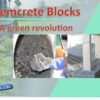
The Ultimate Guide to Sustainable Living in the US
As the world grapples with the challenges of climate change, environmental degradation, and social inequality, the importance of sustainable living has never been more pressing. In the United States, a growing number of individuals, communities, and organizations are embracing sustainable practices that promote a healthier, more equitable, and environmentally conscious way of life. In this comprehensive guide, we will explore the principles, benefits, and practical steps to adopt sustainable living in the US.
What is Sustainable Living?
Sustainable living refers to a lifestyle that minimizes an individual’s or society’s use of the earth’s natural resources, and personal resources. It is a way of living that meets the needs of the present without compromising the ability of future generations to meet their own needs. Sustainable living involves making conscious choices about the way we live, work, and interact with the environment and the people around us.
Key Principles of Sustainable Living
There are several key principles that underpin sustainable living:
* Reduce: Reduce your consumption of resources, waste, and pollution
* Reuse: Reuse products, materials, and resources whenever possible
* Recycle: Recycle materials and products to minimize waste
* Renew: Use renewable energy sources and support sustainable technologies
* Respect: Respect the natural world, biodiversity, and human rights
Benefits of Sustainable Living
Adopting a sustainable lifestyle has numerous benefits for individuals, communities, and the environment. Some of the most significant advantages include:
* Reduced carbon footprint: Sustainable living helps to reduce greenhouse gas emissions and mitigate climate change
* Cost savings: Sustainable practices can save you money on energy, water, and waste management
* Improved health: Sustainable living promotes healthy eating, physical activity, and reduced exposure to pollutants
* Increased energy independence: Renewable energy sources and energy-efficient technologies can reduce reliance on fossil fuels
* Enhanced well-being: Sustainable living fosters a sense of community, connection to nature, and personal well-being
Sustainable Food Systems
The way we produce, process, and consume food has a significant impact on the environment, human health, and the economy. Sustainable food systems prioritize:
* Local and seasonal eating: Support local farmers, reduce transportation emissions, and enjoy fresher produce
* Organic and regenerative agriculture: Promote soil health, biodiversity, and ecosystem services
* Reducing food waste: Plan meals, shop from local farmers, and compost food waste
* Plant-based diets: Choose plant-based options to reduce greenhouse gas emissions and support animal welfare
Sustainable Energy and Transportation
The way we generate and use energy, as well as move around, has a significant impact on the environment. Sustainable energy and transportation options include:
* Renewable energy sources: Invest in solar, wind, and geothermal energy to reduce reliance on fossil fuels
* Energy-efficient technologies: Upgrade to energy-efficient appliances, lighting, and insulation
* Electric and hybrid vehicles: Consider switching to electric or hybrid vehicles for personal transportation
* Public transportation and active transport: Use public transportation, walk, or bike whenever possible
Sustainable Home and Garden
Our homes and gardens can be significant contributors to environmental degradation. Sustainable home and garden practices include:
* Energy-efficient homes: Upgrade to energy-efficient appliances, insulation, and windows
* Water conservation: Install low-flow fixtures and greywater systems to reduce water waste
* Sustainable building materials: Choose sustainable building materials, such as reclaimed wood and low-VOC paints
* Permaculture and regenerative gardening: Design gardens that promote biodiversity, soil health, and ecosystem services
Sustainable Consumerism
The way we consume goods and services has a significant impact on the environment and society. Sustainable consumerism involves:
* Buying second-hand: Shop at thrift stores, garage sales, and online marketplaces for second-hand goods
* Choosing sustainable products: Opt for products made from sustainable materials, with minimal packaging, and designed for recyclability
* Supporting sustainable brands: Research and support companies that prioritize sustainability, fair labor practices, and environmental stewardship
* Reducing waste: Avoid single-use plastics, buy in bulk, and compost food waste
Sustainable Community Building
Sustainable living is not just about individual actions; it’s also about building strong, resilient communities. Sustainable community building involves:
* Community engagement: Participate in local sustainability initiatives, volunteer, and engage with your community
* Cooperative living: Explore cooperative housing, food co-ops, and community land trusts
* Education and skill-sharing: Share knowledge, skills, and resources with others to promote sustainable living
* Advocacy and policy change: Advocate for policies and laws that support sustainable living, renewable energy, and environmental protection
Overcoming Barriers to Sustainable Living
While sustainable living offers numerous benefits, there are often barriers to adoption. Some common barriers include:
* Lack of knowledge: Limited understanding of sustainable living practices and their benefits
* Higher upfront costs: Sustainable products and technologies can be more expensive upfront
* Limited access to resources: Limited access to sustainable products, services, and infrastructure
* Social and cultural norms: Social pressure to conform to unsustainable lifestyles
Conclusion
Sustainable living is a journey, not a destination. It requires patience, persistence, and a willingness to learn and adapt. By adopting sustainable practices, we can reduce our environmental impact, promote social justice, and create a more equitable and resilient world. Whether you’re just starting out or have been living sustainably for years, this guide provides a comprehensive roadmap for sustainable living in the US.
Additional Resources
For those interested in learning more about sustainable living, here are some additional resources:
- National Renewable Energy Laboratory (NREL)
- Environmental Protection Agency (EPA)
- Sustainable Living Association
- Local Harvest
- The Sierra Club
Getting Started with Sustainable Living
If you’re new to sustainable living, here are some simple steps to get started:
- Conduct a personal sustainability audit
- Set sustainability goals and create an action plan
- Start with small changes, such as reducing energy consumption or using public transportation
- Explore local sustainability initiatives and join a community group
- Continuously educate yourself and stay up-to-date on sustainable living practices
By working together and making conscious choices, we can create a more sustainable future for all.
Glossary of Sustainable Living Terms
Here are some key terms to know:
- Carbon footprint: The amount of greenhouse gas emissions produced by an individual or organization
- Renewable energy: Energy generated from natural resources, such as solar, wind, and geothermal
- Sustainable agriculture: Farming practices that prioritize soil health, biodiversity, and ecosystem services
- Zero-waste: Aiming to minimize or eliminate waste in daily life
- Eco-friendly: Products or practices that minimize environmental harm
Case Studies and Examples
Here are some inspiring examples of sustainable living in action:
- The city of Copenhagen’s carbon-neutral district heating system
- The sustainable community of Twin Oaks in rural Virginia
- The eco-friendly architecture of the Bullitt Center in Seattle
- The regenerative agriculture practices of Singing Frogs Farm in California
These examples demonstrate that sustainable living is not only possible but also beneficial for individuals, communities, and the environment.
Policy and Advocacy
To accelerate the transition to sustainable living, policy and advocacy efforts are crucial. Here are some ways to get involved:
Conclusion
Sustainable living is a multifaceted and dynamic concept that requires a holistic approach. By understanding the principles, benefits, and practical steps outlined in this guide, individuals can make informed choices that promote a more sustainable future. Whether through food systems, energy and transportation, home and garden, consumerism, or community building, every action counts. Together, we can create a more resilient, equitable, and environmentally conscious society.
Recommendations for Future Research
Future research should focus on:
- The economic benefits of sustainable living
- The social and cultural barriers to sustainable living
- The development of new sustainable technologies
- The integration of sustainable living practices into education and policy
References
For those interested in delving deeper into sustainable living, here are some recommended readings:
- The Zero Waste Home by Bea Johnson
- The Sustainability Revolution by Andres Edwards
- The Uninhabitable Earth by David Wallace-Wells
- Cradle to Cradle by William McDonough and Michael Braungart

Frequently Asked Questions
- What is sustainable living?
- Sustainable living refers to a lifestyle that minimizes an individual’s or society’s use of the earth’s natural resources, and personal resources.
- Why is sustainable living important?
- Sustainable living is important to reduce greenhouse gas emissions, mitigate climate change, and promote a healthier and more equitable way of life.
- What are the key principles of sustainable living?
- The key principles of sustainable living are: Reduce, Reuse, Recycle, Renew, and Respect.
- How can I reduce my carbon footprint?
- You can reduce your carbon footprint by using public transportation, carpooling, or driving electric or hybrid vehicles, as well as reducing energy consumption and waste.
- What are some sustainable food systems?
- Sustainable food systems include local and seasonal eating, organic and regenerative agriculture, reducing food waste, and plant-based diets.
- How can I make my home more sustainable?
- You can make your home more sustainable by upgrading to energy-efficient appliances, using renewable energy sources, conserving water, and using sustainable building materials.
- What is sustainable consumerism?
- Sustainable consumerism involves buying second-hand, choosing sustainable products, supporting sustainable brands, and reducing waste.
- How can I get involved in sustainable community building?
- You can get involved in sustainable community building by participating in local sustainability initiatives, volunteering, and engaging with your community.
- What are some common barriers to sustainable living?
- Common barriers to sustainable living include lack of knowledge, higher upfront costs, limited access to resources, and social and cultural norms.
- How can I overcome the barriers to sustainable living?
- You can overcome the barriers to sustainable living by educating yourself, seeking support from your community, and advocating for policy changes.














